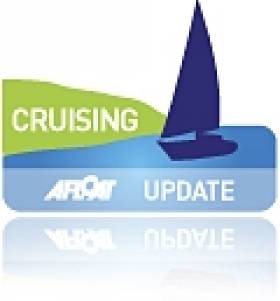Displaying items by tag: Coastal Cruising
#Superboats – Having spent a week visiting Dun Laoghaire Harbour, the 46m superyacht Christopher that dwarfed the local 500 plus craft and several larger craft currently taking part in the Round Ireland race departed today and follows the anchorage of 37m motoryacht Katrion to the secluded waters off Glengariff, writes Jehan Ashmore.
Such large-sized and luxuriously appointed leisure-vessels visiting Irish waters, reflects not only the high-season, but also demonstrates the appeal of our wonderful scenic cruising grounds where the role of marina's and suitable sheltered seas benefit visitor alike and the local economy.
Christopher, a dark-bull hulled ketch from the design of Ron Holland cannot be easily forgotten even when witnessed in static mode moored alongside an outer-lying berth within Dun Laoghaire Marina.
The Cayman Islands flagged vessel was berthed close to the customs cutter, RCC Suirbheir, where she and her sister, RCC Faire are relatively frequent callers to the marina.
As for the motoryacht, Katrion, the white hulled 400 tonnes vessel launched from Feadship, a leading Dutch specialist of such luxurious leisure boats yesterday anchored off Glengariff having called as reported to Cork City Marina. Likewise her sheer size made an impact along local Leeside craft.
As previously alluded the 10-guest capacity visitor also flying the flag of the these Caribbean islands was due to discover the delights of Dingle, from where Katrion departed for Glengariff.
This she did as the vessel departed Dingle yesterday and took the passage to Glengariff along the spectacular rugged Kerry and Cork coastlines. This included a call to Knightstown, Valentia Island only accessible from the northern approaches due to the low-lying bridge linking the mainland at Portmagee.
Later the motoryacht made a transit through Dursey Sound before heading for her current attractive anchorage in Bantry Bay.
Glengariff is to welcome a considerably larger leisure seeker in the form of the 190m cruiseship Amadea due next month. As previously reported, there are seven callers scheduled this season, with the Phoenix Reisen operated ship to make a repeat call.
Beforehand another caller is expected the eye-catching cruise tall-ship, Club Med 2 due in September.























